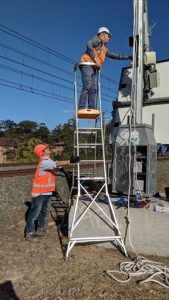Systems Engineering & Project Risk
Risk always finds itself as a key talking point among all projects; how can you quantify it accurately, and more importantly, how can you limit it? There’s no plot twist here, the answer is systems engineering. By investing more time and resources into early design and pre-design phases, we can deliver the overall project at a lower cost and to an improved schedule.

Every day, society relies upon large civil infrastructure to go about their daily business, including works such as buildings, utilities, transportation networks and IT networks. These are systems – infrastructure systems – with complex relationships (known as interfaces) to other infrastructure systems. Through these interfaces, one system can greatly affect another (both positively and negatively). Think about the effect that an electrical disruption could have to building infrastructure. Basic functionality including lighting, air conditioning and building management systems would go offline. To mitigate the effects of this, and other circumstances, a full understanding all the interfaces is required. As the complexity of the built environment is escalating rapidly in today’s day and age, this is becoming a crucial part of any infrastructure project, and where systems engineering can bring you value.
So, what is systems engineering? Fundamentally, systems engineering is a process that manages interface and integration complexity. Using structured processes and a multi-disciplinary approach, we can break down a large, complex task into smaller, more manageable ones. To achieve this, we use several tools and techniques including breakdown structures, requirements management, interface management, and verification and validation (see ‘V’ model below). Through these tools, projects can have a unique view into the ‘big picture’ of how each system will interact with each other early in the system lifecycle. Because of this, issues can be identified and resolved before any construction has commenced, preventing large costs and schedule blowouts further down the track.

Many infrastructure projects are required to invest a large amount of their budget into labour-intensive civil, structural, and electrical construction. Using the tools mentioned above, systems engineering can significantly improve construction efficiency (and other) phases by:
- Improving stakeholder communication
- Limiting rework due to poorly understood requirements and/or miscommunications (interfaces)
- Shortening project cycles by improving schedule assurance
- Developing more flexible and robust systems that are fit for purpose
- Improving quality and comprehensive testing delivering assured functionality
- Creating and maintaining thorough documentation for through life support of the asset/s
Many types of projects can benefit from the use of systems engineering. For projects with large technology packages, there is a substantial need for the structure and benefits that systems engineering brings. There is a common myth that a systems engineering approach is not required for projects with smaller technology packages. This is not true, as the opportunities mentioned above are transferable to civil based projects to de-risk, as well as deliver quality efficiently.
Layer 2 intelligence has built our business systems with systems engineering at its core, with alignment to ISO/IEC15288:2015. To have a conversation about how Layer 2 Intelligence can utilise systems engineering approach to bring value to your next project, get in touch via our contact page.


